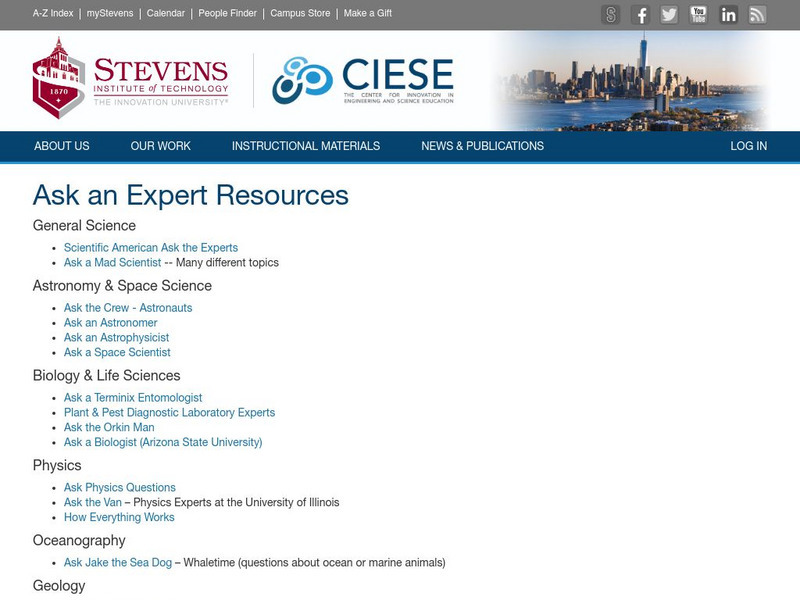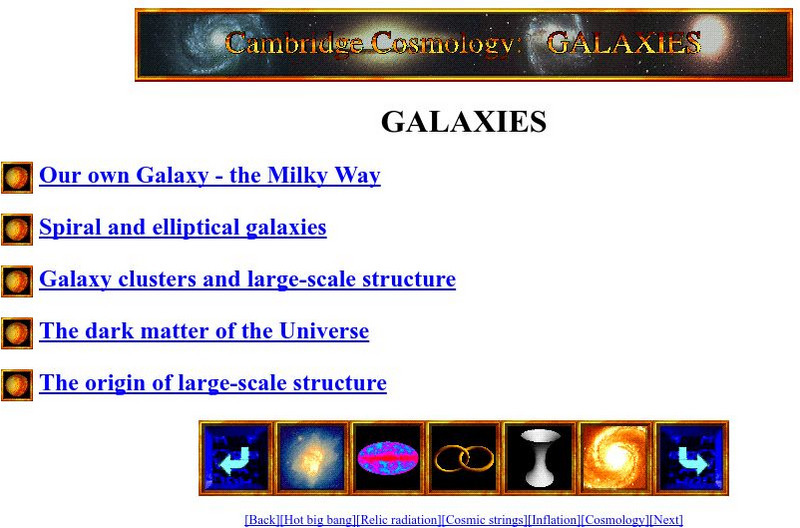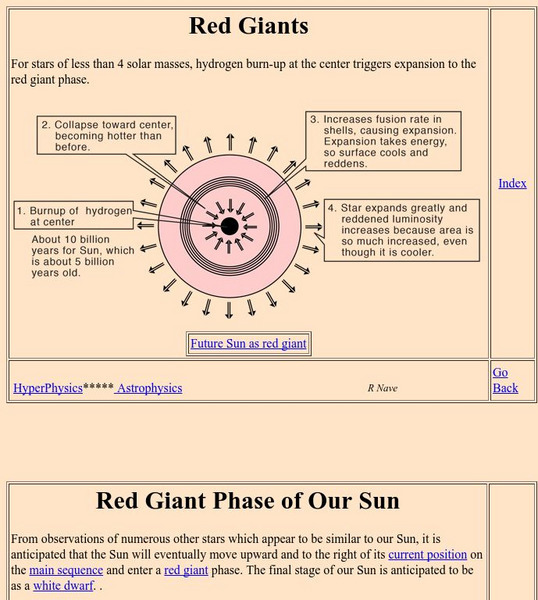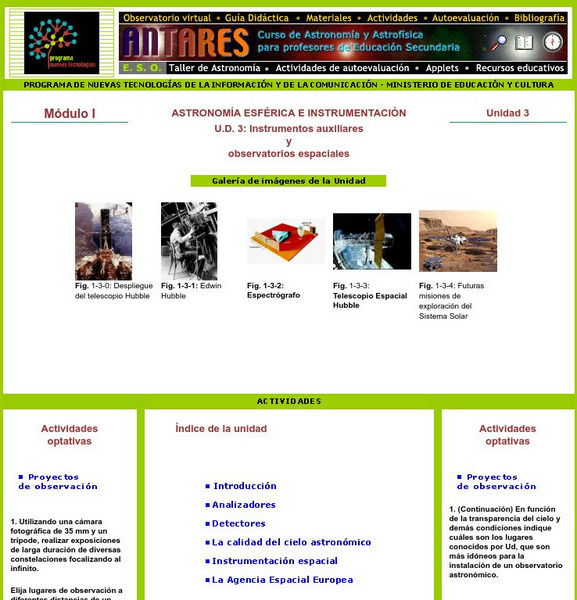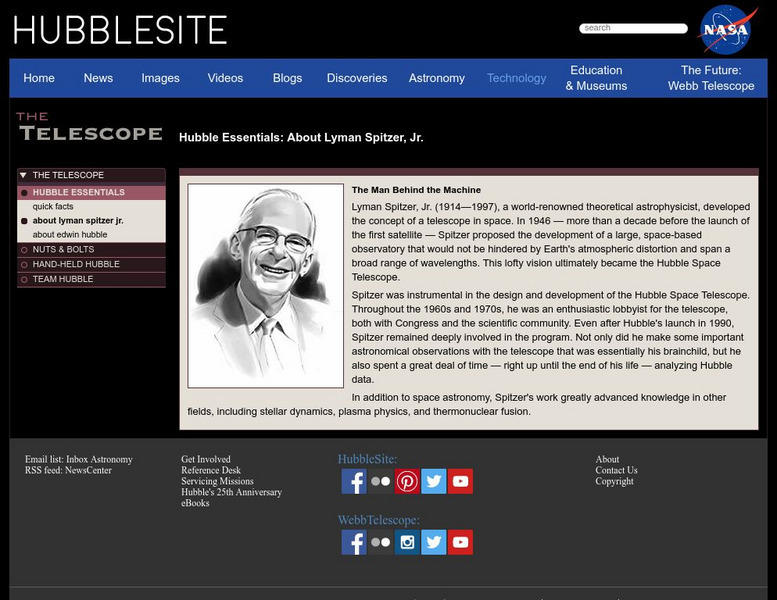Curated OER
Science Kids: Science Images: Satellite Dish
A photo of two huge satellite dishes aimed into space that are used for research in the field of space and astronomy.
ClassFlow
Class Flow: Astronomy Parallax
[Free Registration/Login Required] This flipchart explains the significance of Delta Cephei in the constellation Cepheus and its historical significance in determining distances in space. It discusses parallax, standard candles, and the...
Other
Royal Observatory, Edinburgh
The official homepage of the Royal Observatory in Edinburgh, Scotland.
NASA
Nasa: Marshall Space Flight Center: Chandra
NASA's Chandra X-ray Observatory site features a photograph and explanation of a "cool" black hole in the Andromeda Galaxy (M31).
NASA
Nasa: Goddard Scientific Visualization Studio
This impressive exhibit of images and videos is available to see how NASA uses technology to track the weather. You can search by keyword for more specific images.
California Institute of Technology
Welcome to Cool Cosmos!
Site provides a cosmic classroom, an image gallery, science resources, fun and games, and much more!
Center for Innovation in Engineering and Science Education, Stevens Institute of Technology
Ciese: Educational Links: Ask an Expert Sites
Ever wondered about, well, anything? Get your burning question answered here from reigning experts in General Science, Astronomy and Space Science, Biology and Life Sciences, Physics, Oceanography, Geology, Weather, and Health.
California Institute of Technology
Ipac: Iras Gallery
This site from IPAC is a series of images of various celestial objects and regions as viewed in infrared light. Each photo is accompanied by a caption.
Wikimedia
Wikipedia: The Black Hole
This site examines the black hole as an object in astrophysics. Delve into this comprehensive resource that covers this concept from its history, to qualitative physics, the reality of black holes, mathematical physics and more.
Ministerio de Educación (Spain)
Ministerio De Educacion: Astronomia Para Ninas Y Ninos
Learn basic astronomy and travel through space. After you finish the lessons you can take the evaluation to obtain the clues needed to play the fun space games.
NASA
Nasa: Heasarc: What Are Pulsars?
A detailed definition of a pulsar with an explanation of the relationship of pulsars to X-ray astronomy and links to related resources.
Ministerio de Educación (Spain)
Ministerio De Educacion: Diagrama H R Modulo Ii Unidad 3
In this unit you will study the different types of luminosity, the effective temperature of the stars and the Hertzsprung-Russell diagram.
Other
University of Cambridge Cosmology: Galaxies
This site from the University of Cambridge allows you to view information on spiral, elliptical, and Milky Way galaxies, as well as galaxy clusters. Provides basic facts about each one.
NASA
Nasa: Imagine the Universe: White Dwarfs
Brief description of white dwarfs with respect to their position in the life cycle of stars, the density of white dwarfs, the emissions of white dwarfs, and the temperatures associated with them.
NASA
Nasa: Wmap: Fate of the Universe
A general look at the expansion of the universe and the Big Bang theory.
Harvard University
Chandra X Ray Observatory Center: X Ray Pulsar
X-ray pulsars are explained. Features a Java applet that simulates a pulsar and allows the viewer to control the rotational speed.
University of Oregon
The Electronic Universe: Ccd Images of Planetary Nebulae
Basic characteristics of planetary nebulae and the relationship to stellar evolution is presented along with many detailed images.
Georgia State University
Georgia State University: Hyper Physics: Red Giants
Describes the red giant star's development stages and the scenario of our sun as a red giant. Diagrams are used to present the information.
E-learning for Kids
E Learning for Kids: Science: Madagascar: What Is the Solar System?
Patrick loves being a pirate, but he'd prefer to be an astronomer. Join him, and learn about everything high in the sky like the moon, stars, and asteroids.
Nine Planets
Nine Planets: The Web Nebulae
This site from Nine Planets provides introductory material about nebulae, information and images of several types of nebulae, information on Edwin Hubble, and additional related sites are provided.
Ministerio de Educación (Spain)
Ministerio De Educacion: Instrumentos Auxiliaries Modulo I Unidad 3
In this unit you will learn the main advantages and disadvantages offered by the refractor and reflector telescopes for a particular observation. You will also learn about the main types of telescopes.
University of California
University of California Berkeley: Black Holes Faq
A detailed list of questions and answers concerning black holes that defines black holes and describes their basic physics and characteristics.
Space Telescope Science Institute
Hubble Site: Lyman Spitzer Jr.
At the HubbleSite you can learn about Lyman Spitzer's (1914?1997 CE) inventions and accomplishments in the science field.
Cosmo Learning
Cosmo Learning: Introduction to Astrophysics
A collection of audio lectures from an introduction to astrophysics course taught at the University of California, Berkeley. The course discusses the solar system, stars, quantum mechanics, gravitation, and cosmology focusing on how...
Other popular searches
- Astronomy and Space Science
- Astronomy and Space
- "Astronomy and Space Science
- Astronomy and Space Lesson






